Looking for traditional Japanese food? This is your ultimate food list for must-try Japanese dishes in Japan!
As a travelling foodie, I love trying the local cuisine and traditional dishes when visiting destinations.
Japan is not just one of the best countries for food in Asia but in the world.
I love Japanese food! And it’s among my go-to cuisine when I want to eat something.
When I visited Japan in 2019, I made sure to try a lot of traditional dishes during my time in Tokyo and Osaka.
This guide will give you a tour of traditional Japanese food so you have a handy list for your trip to Japan, when visiting Japanese restaurants, or if you want to make them at home.
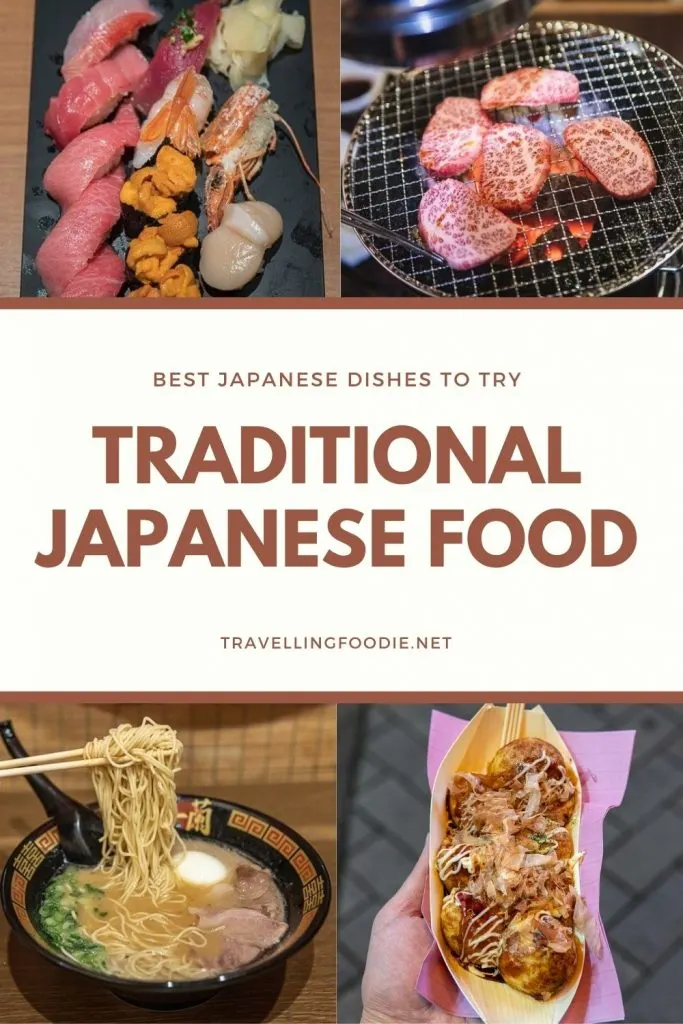
Japanese Food Culture
Known as “Washoku,” the traditional Japanese cuisine contains small simple dishes using fresh and seasonal ingredients.
Aside from taste, traditional Japanese diet is based on a whole foods diet focused on unprocessed fish, seafood, and plant-based foods with minimal amounts of animal protein, added sugars, and fat.
Japanese cuisine and diet is rich in nutrients and provides numerous health benefits, weight loss, better digestion, life expectancy, and overall health.
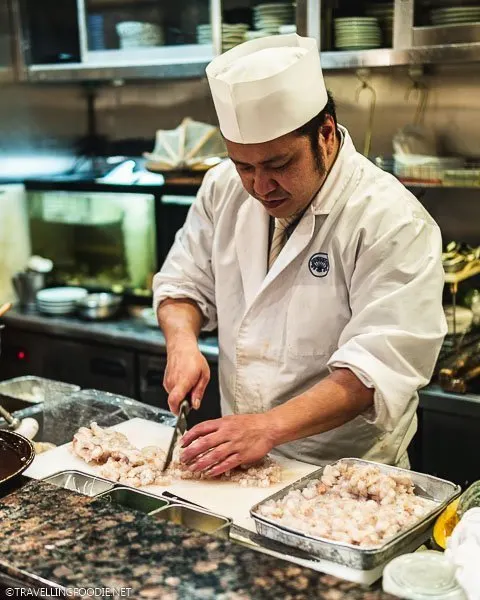
This is why Japanese people have always been considered among the healthiest people and having highest longevity in the world.
Japan is 2nd to France in the most Michelin-starred restaurants, which speak volumes about Japanese cuisine on a professional and fine dining level.
Most food and travel bloggers often visit almost every prefecture in Japan as it presents an opportunity for them to show their viewers the traditional Japanese food culture.
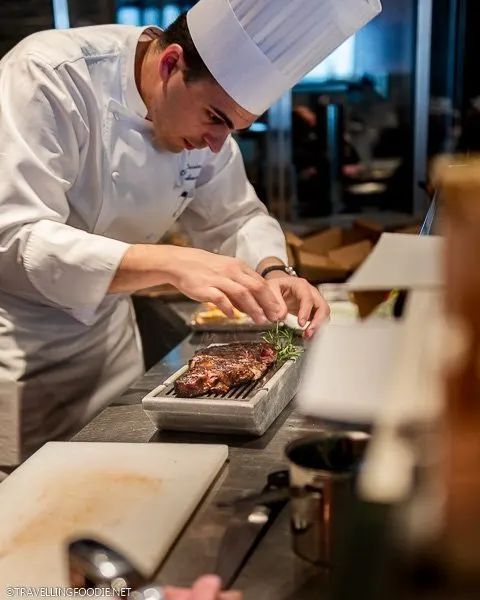
Also Read: Traditional Filipino Food – 18 Best Filipino Dishes To Try in the Philippines
37 Traditional Japanese Food You Must Try
Whether you already love Japanese cuisine or curious about Japanese food for beginners, here’s a list of 37 popular traditional Japanese food to love that aren’t Japanese desserts!
Ankimo
Ankimo, also known as monkfish liver, is a popular Japanese food that is often served as an appetizer.
The liver is known for its creamy texture and delicate flavor that can be enhanced with soy sauce, ponzu sauce, or wasabi.
Did you know? Ankimo is also called “Foie Gras of the Sea”
Ankimo is commonly enjoyed with a glass of sake, making it a perfect addition to any izakaya or sushi restaurant.
Since it’s an expensive item, I usually get to eat ankimo when I do omakase or kaiseki.
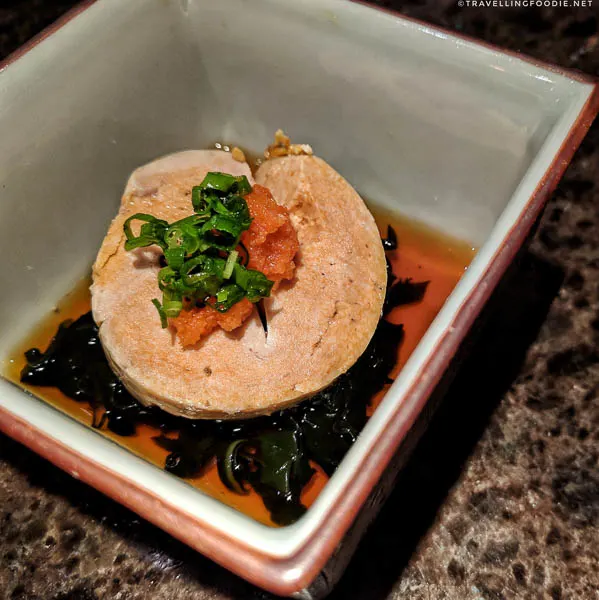
Chawanmushi
Often served as a starter or appetizer in Japanese cuisine, chawanmushi is a savory egg custard dish.
This traditional Japanese food is made by steaming eggs, dashi broth, and other ingredients like chicken, shrimp, or mushrooms in a small bowl.
The dish is often seasoned with soy sauce, mirin, and sake, and may also contain ingredients like ginkgo nuts or gingko seeds.
I love chawanmushi but not a lot of people know how complicated it can be to make.
It is a delicate and subtle dish because the egg custard can be overcooked or undercooked, which ruins the entire experience of the dish.
The perfect texture of chawanmushi should be smooth and silky with a rich umami from all the ingredients.
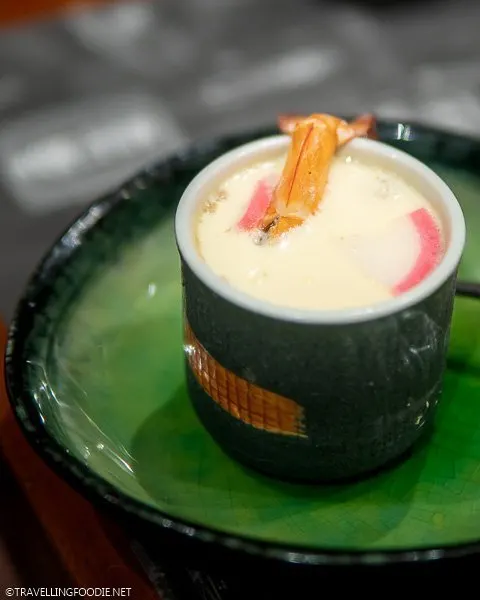
Curry
When people think of curry, most of the times they think of Indian curry or Thai curry.
But Japan has their own version of curry too!
Amongst the other popular dishes from Japanese cuisines, Japanese curry is also hugely popular, which is why you’ll see it often in anime and manga.
This traditional Japanese food can easily be found at at various restaurants and street food stalls, enjoyed as curry rice, curry udon or curry bread.
It’s also a staple in Japanese households since it’s easy to make in bulk.
Did you know? The curry emoji is actually Japanese curry rice (kare-raisu)!
Japanese Curry is usually made with potatoes, carrots, onions and served with meat and rice.
Since curry was brought to Japan from India, Japanese curry uses some Indian spices as part of it.
Unlike Indian curry, Japanese curry is sweeter and less spicy, and also has a thicker gravy-like texture.
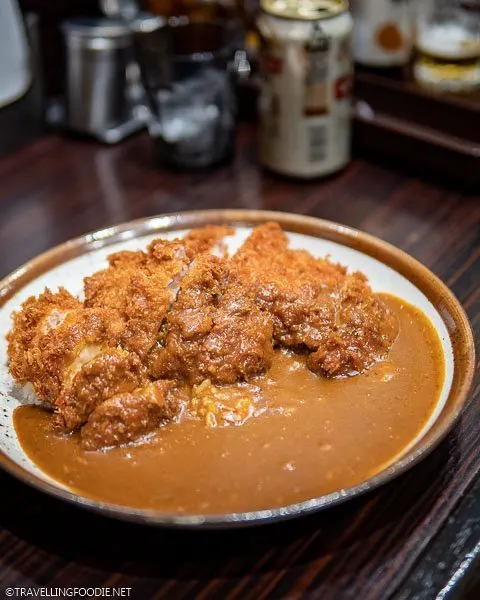
Gyoza
Gyoza are Japanese dumplings filled with minced pork, cabbage and garlic, and usually served with dipping sauce.
You can enjoy this traditional Japanese food steamed and boiled, but it commonly enjoyed pan-fried to make the skin crispier.
Gyoza is widely available as appetizers in restaurants, or as street food snacks from food stalls and vendors.
Aside from the thickness of the gyoza skin, garlic is a key component so a strong garlicky flavour sets it apart of Chinese dumplings.
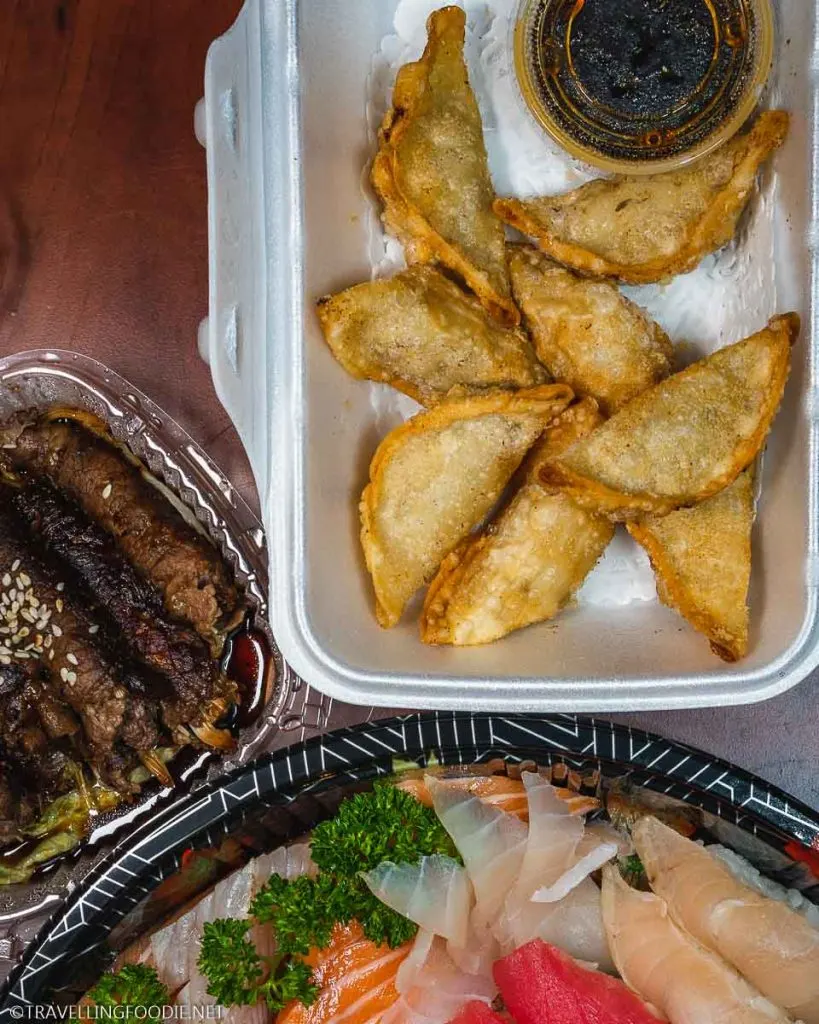
Gyudon
Gyudon is a a popular beef rice bowl dish in Japan.
The traditional Japanese food is made by simmering thinly sliced beef with onions in a sweet and savory broth made with soy sauce, mirin, and sake.
The beef and onions are then served over a bowl of steamed rice, and garnished with green onions and pickled ginger.
Gyudon is a popular dish in Japanese fast food chains like Yoshinoya and Sukiya, and is also commonly found in bento boxes.
Gyudon is such a comfort food for me being a meat and rice lover.
I remember growing up in Manila as a kid and we would go to Yoshinoya so often because of how much I love their gyudon.
And then when my family finally went to Japan as a kid, I was happily eating gyudon at Yoshinoya every day!
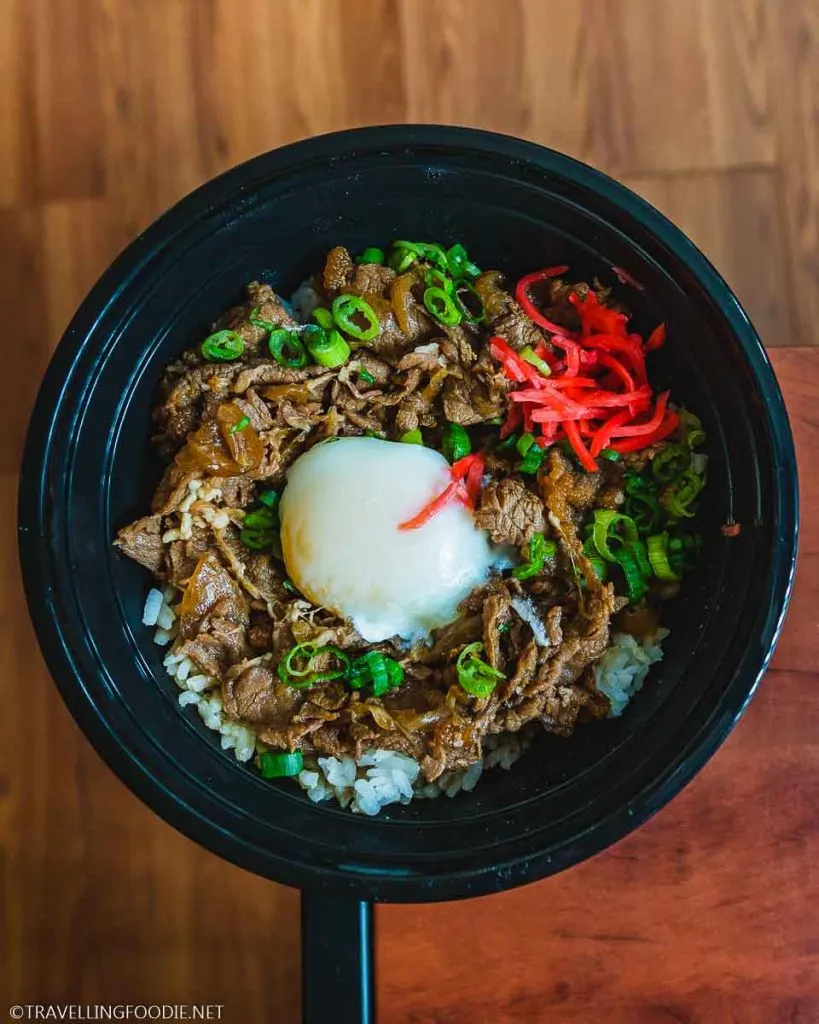
Gyutan
Gyutan, or beef tongue, is a popular Japanese dish that originated in Sendai city.
This traditional Japanese food is prepared by boiling and grilling beef tongue, which results in a juicy and tender texture.
The meat is seasoned with soy sauce and other spices, giving it a delicious umami flavor.
Since beef tongue is quite a delicate meat, it can get tough and rubbery in texture when not cooked properly.
Gyutan is commonly served with rice or as part of a bento box.
In recent years, this traditional Japanese food has gained popularity in other parts of Japan and around the world, with many restaurants specializing in gyutan.
I love Gyutan and typically order it on the menu.
I remember the first time I saw a food stall specializing in Gyuten was Gyutan Tsukasa in Costa Mesa, California, and I was so excited!
I just had to try their delicious Gyutan Yakiniku, beef tongue cooked on charcoal grill, which I highly recommend!
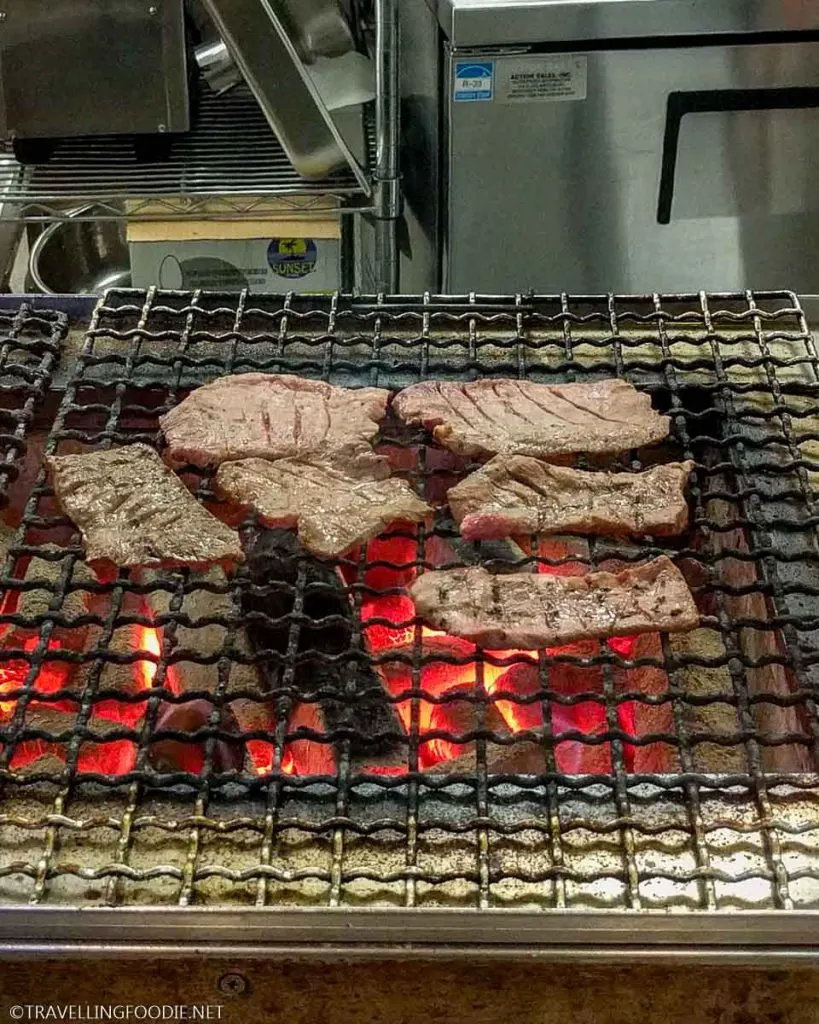
Hiyayakko
Hiyayakko is a chilled tofu dish.
This classic Japanese food is made by slicing cold, silken tofu and topping it with toppings like grated ginger, chopped green onions, and soy sauce.
Hiyayakko is a refreshing and light dish that is perfect for the hot summer months, and often served as an appetizer or side dish in Japanese restaurants.
Kaki Fry
A perfect dish for seafood lovers, kaki fry is breaded and deep-fried oysters.
This traditional Japanese food is typically served with tonkatsu sauce or tartar sauce and lemon wedges.
I love kaki fry and it’s one of my favourite Japanese fried dishes!
The crispy outer layer bursts into the soft, juicy center of the oyster when you bite into it.
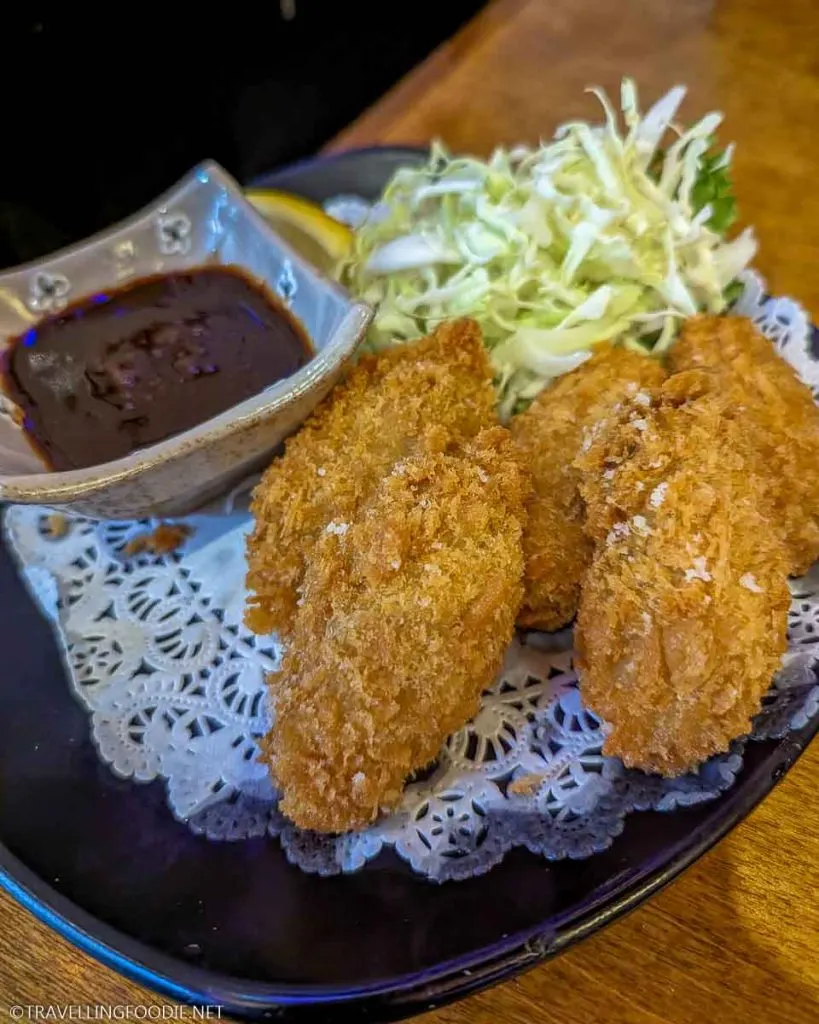
Karaage
Karaage is a bite-sized pieces of deep-fried chicken, Japan’s version of Taiwanese popcorn chicken.
This classic Japanese food is made by marinating the chicken in a mixture of soy sauce, ginger, garlic, and sake before coating it in potato starch or flour and deep-frying it until golden brown.
Karaage is a popular dish in Japan, and can be found in bento boxes, izakayas, and fast food chains.
The dish is often served with a side of rice and shredded cabbage, but can be eaten on its own too.
I typically enjoy eating karaage on its own as a snack, usually before my main course of ramen or gyudon.
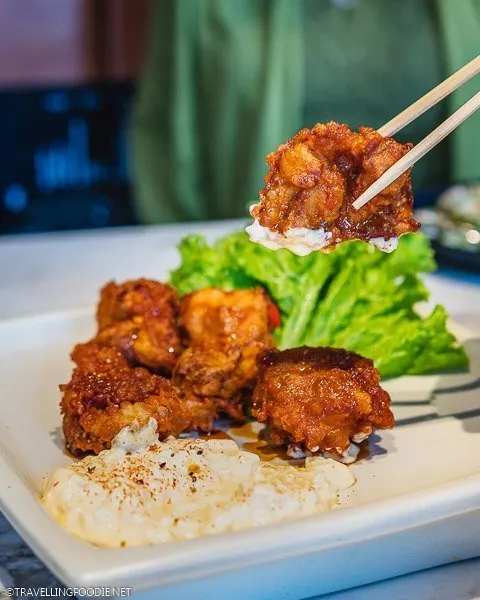
Kamameshi
Kamameshi is a rice dish that’s cooked and served in a traditional iron pot called a kama.
The rice is usually mixed with various ingredients such as vegetables, meat, or seafood, and then steamed until it’s cooked through and flavorful.
Kamameshi is often enjoyed at Japanese festivals or in restaurants that specialize in the dish, as it’s both delicious and visually impressive when served in its hot pot.
It reminds me of the Japanese version of Chinese clay pot rice, and a a great way to experience the unique flavors and textures of Japanese cuisine.
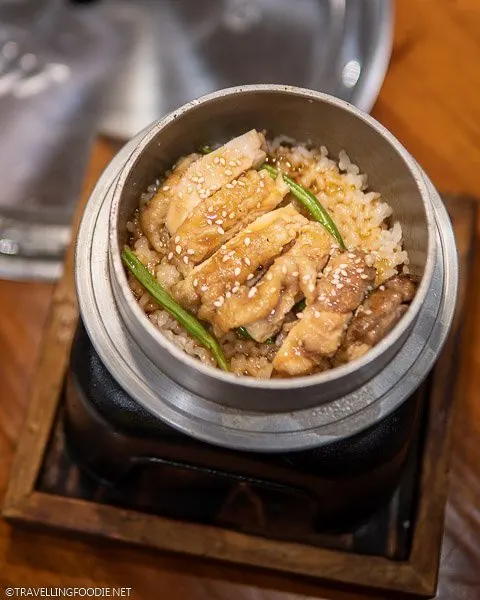
Korokke
Korokke is essentially a croquette, which can be found in various flavors like crab, shrimp, and corn.
The popular Japanese food consists of a deep-fried patty made with mashed potatoes and minced meat or seafood, which is then coated in panko breadcrumbs.
Korokke is a versatile dish that can be enjoyed as a snack or as a meal with rice and miso soup.
It is a popular dish in Japanese convenience stores like 7-Eleven, Lawson and Family Mart.
Kushiage
Kushiage is deep-fried skewered meat or vegetables.
This traditional Japanese food is similar to yakitori, but the skewered ingredients are dipped in a batter made of eggs, flour, and breadcrumbs before frying.
Kushiage is often served as an appetizer or bar snack, and can be found in izakayas and street food stalls.
The dish is typically served with a dipping sauce like tonkatsu sauce or ponzu sauce.
As a fried food lover, I was on a mission to try kushiage on my trip to Japan that I went to the famous Kushikatsu Durama Shinsekai in Osaka.
I’ll be honest though, I still personally prefer tempura over kushiage because I like the tempura’s buttery and flakey batter over the panko breadcrumbs of a kushiage.
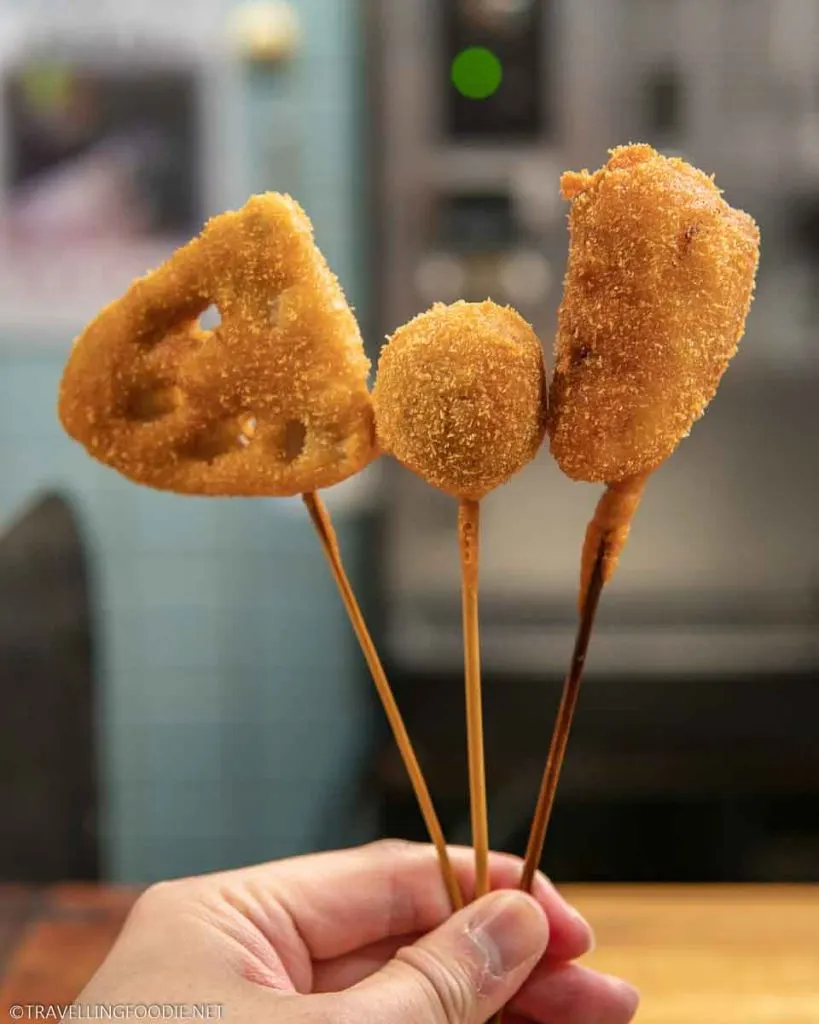
Nabe
Nabe is a communal-style Japanese hot pot that is cooked and served in a large pot in the center of the table.
It typically contains a variety of meats, seafood, and vegetables, and is flavored with dashi, soy sauce, and mirin.
Nabe is often enjoyed during the colder months in Japan and is a great way to share a meal with friends and family because of its communal style.
Unlike shabu-shabu where it’s up to you which toppings you want to cook and when, nabe already has all the toppings in the pot and just waiting to be cooked.
Natto
One of Japan’s most unique and polarizing foods, natto is made from fermented soybeans and is a staple in Japanese cuisine.
This traditional Japanese food has a strong, pungent smell and a sticky texture that can take some getting used to for those unfamiliar with it.
Natto is often eaten as a breakfast food in Japan, and is typically served over rice with soy sauce and other toppings like scallions and mustard.
Despite its strong flavor and texture, natto is a nutritious food (even considered a superfood) that is high in protein and fiber, and is enjoyed by many Japanese people as a staple of their diet.
Nikujaga
Nikujaga is a meat and potato stew.
The traditional Japanese food is made by simmering thinly sliced beef and potatoes with onions and carrots in a sweet and savory broth made with soy sauce, sake, and sugar.
Nikujaga is a comforting and hearty dish that is often served with rice and pickles.
It is a popular home-cooked dish in Japan, and is enjoyed by people of all ages.
Ochazuke
Ochazuke is essentially a bowl of rice with green tea poured over it.
This traditional Japanese food is topped with various toppings like grilled salmon, pickled plums, nori seaweed, and wasabi.
Ochazuke is a simple and comforting soup that is often eaten as a light meal or snack.
It is especially popular during the winter months, as the warm green tea helps to warm up the body.
I don’t see it often in Japanese restaurants in North America so you have to try it when you see it!
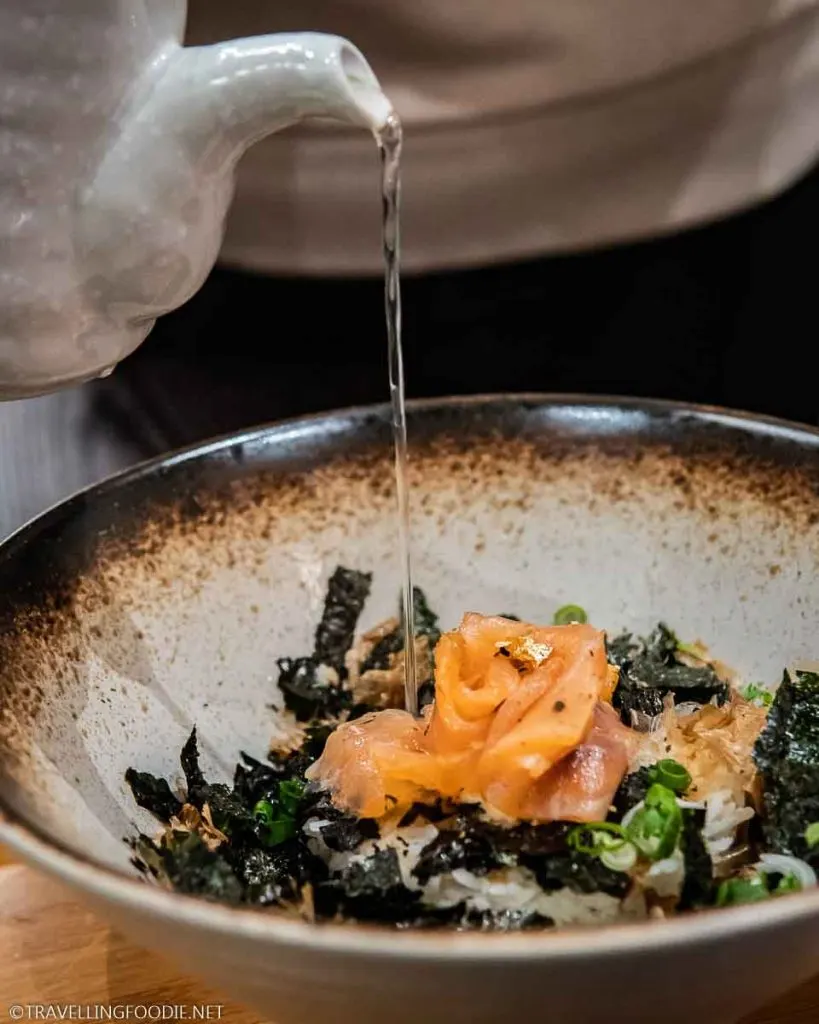
Okonomiyaki
Okonomiyaki is a pan-fried Japanese savoury pancake dish prepared with egg, batter and cabbage.
Okonomiyaki is particularly popular in the cities of Osaka and Hiroshima in which they have their own variations.
With “okonomi” meaning “whatever you like,” this traditional Japanese food usually has various toppings to your liking including meat, seafood, wasabi, and cheese.
The batter is cooked on a teppanyaki grill, which is why there’s “yaki” in the name.
Popular okonomiyaki toppings are octopus, shrimp, pork, yam, or kimchi (Korean fusion).
The best okonomiyaki I’ve had so far was at Okonomiyaki Kiji in Osaka.
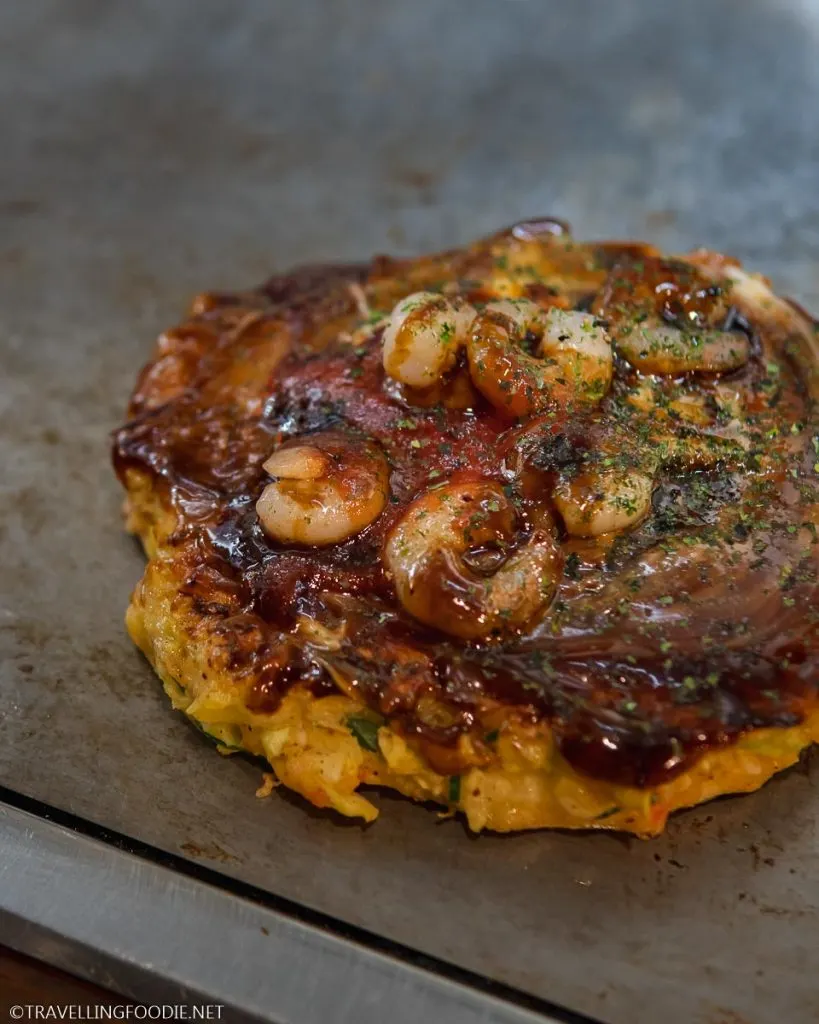
Omurice
A Japanese take on a western dish, omurice is a Japanese food that is a combination of an omelette and fried rice.
The classic Japanese dish is made by cooking fried rice with vegetables, meat, and sometimes ketchup, and then wrapping it in a thin layer of egg omelette.
Omurice is often served with a drizzle of ketchup or tomato sauce, and is a popular lunch or dinner item in Japan.
It is a perfect example of the fusion of Western and Japanese cuisine, and has become a beloved comfort food in Japan.
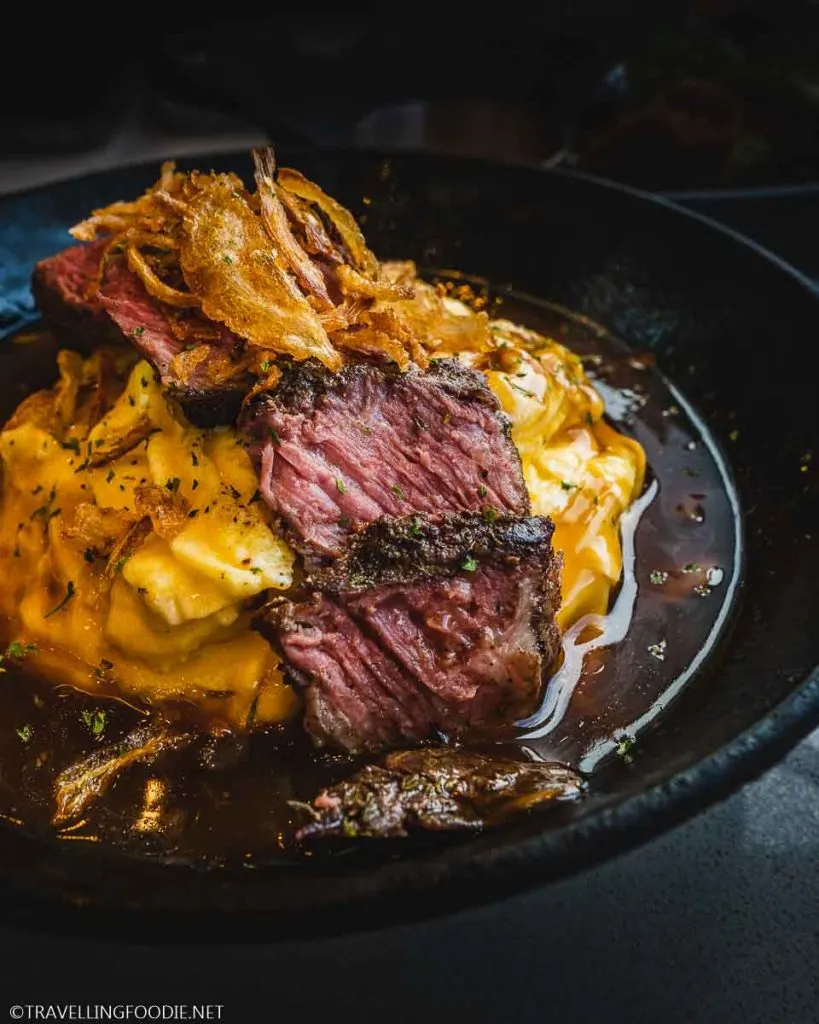
I love eating omurice because it’s like a full meal on its own already with the meat, vegetables and carbs.
When you visit Kyoto, there’s a popular Master Chef Motokichi Yukimura who specializes in making the best omurice.
Here’s a video of Chef Motokichi Yukimura in action:
Onigiri
Onigiri is a type of rice ball, in which the rice is often flavored with salt or other seasonings, and may also contain fillings like tuna, salmon, or pickled vegetables.
This traditional Japanese food is a popular snack in Japan, and is often eaten on the go or as a quick and easy meal.
Iconic for its triangular shape, Onigiri is a staple food in Japanese convenience stores like 7-Eleven, Lawson and Family Mart , where it is sold in a variety of flavors and styles.
Personally, I still prefer sushi because I find onigiri has too much rice.
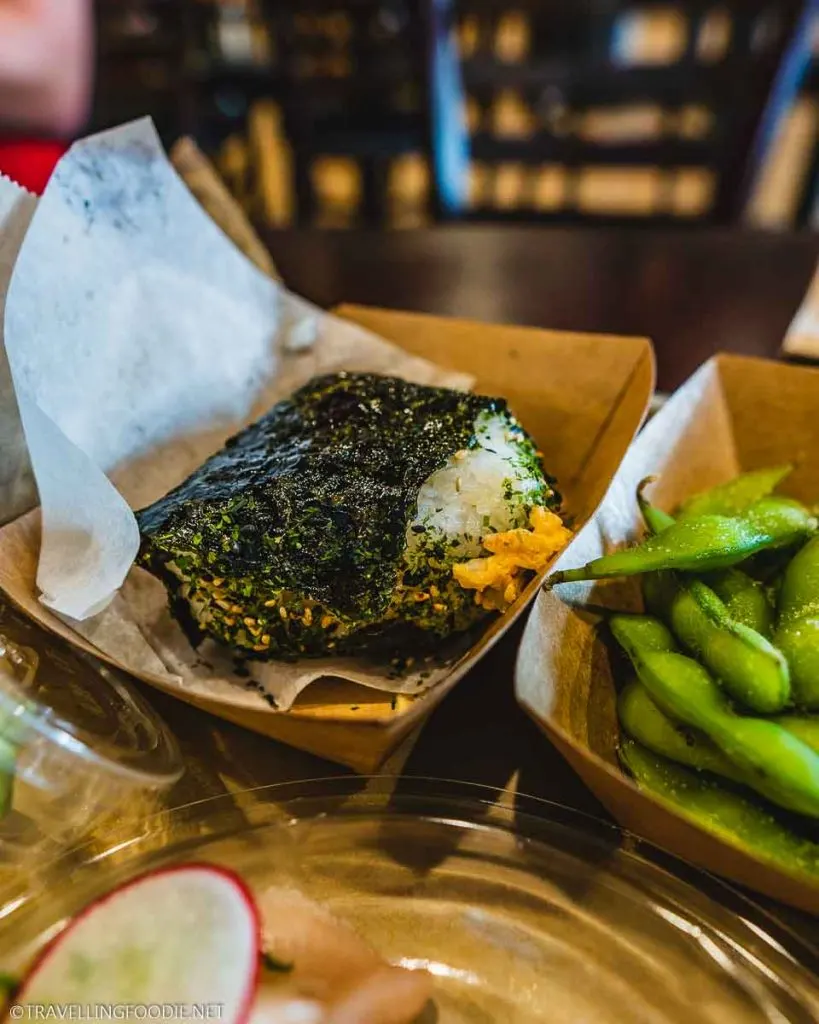
Ramen
Originating from China, Ramen is a noodle soup dish that was brought to Japan in 1859 and became one of the most popular dishes in Japan.
Ramen became extremely popular due to Japanese manga, anime and pop culture.
This traditional Japanese food is one of the most budget-friendly foods for students and travelers, not just in Japan but in the entire world.
Ramen restaurants or stalls, called Ramen-ya, can be found all over Japan, and each region has their own version of this famous noodle soup.
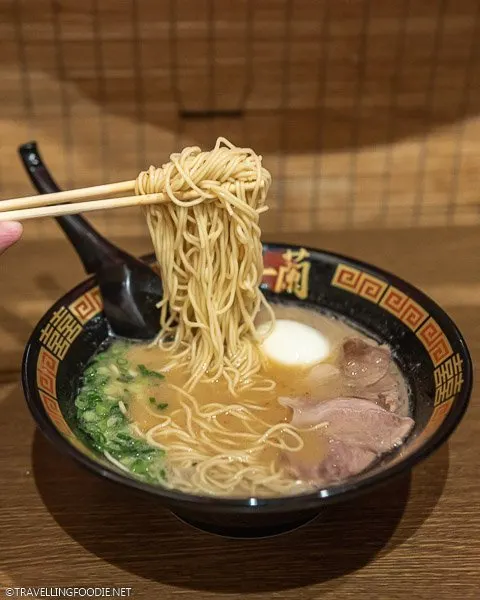
Saba
Saba, or mackerel, is a staple of Japanese cuisine that can be prepared in a variety of ways, such as grilled, pickled, or served as sashimi.
The oily fish is rich in flavor and high in omega-3 fatty acids, making it a healthy and delicious option.
This traditional Japanese food is commonly enjoyed with a side of rice and miso soup.
Though I enjoy it as sashimi, I also really love it grilled because the grill taste enhances the flavours and the oil makes it juicy.
Saba as a sashimi is an acquired taste because it has a fishy taste that can be strong compared to other sashimi.
Sashimi
Perhaps the most simple of all Japanese food, Sashimi is thinly sliced raw meat, usually seafood.
Though it sounds simple, the preparation is meticulous and the freshness of the fish paramount.
The art of sashimi (and also sushi) takes very long to master usually up to 20 years!
You’ll also often find sashimi in traditional Japanese set course meal, especially kaiseki in which there’s a specific sashimi course called Otsukuri.
Sashimi is often served with soy sauce for dipping and wasabi to enhance the taste.
It is also typically served with pickled ginger on the side to cleanse the palate, and some luxury sashimi plates would serve sea grapes as well.
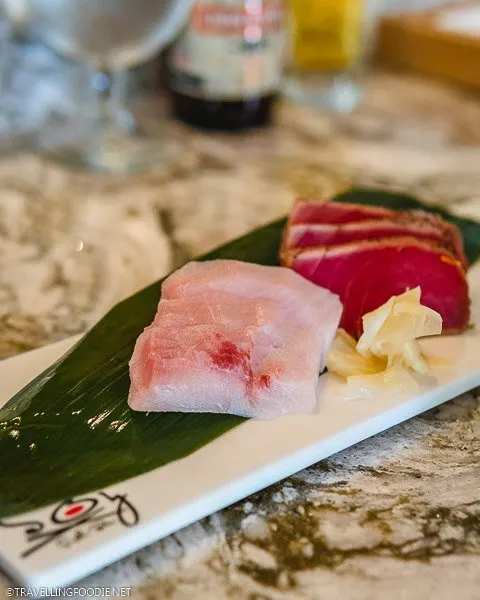
Shabu-Shabu
Shabu-shabu is a Japanese hot pot dish that is made by cooking thinly sliced beef and vegetables in a pot of boiling water or broth.
Did you know? The name “shabu-shabu” comes from the sound of the meat being swished around in the pot: “swish swish.”
This classic hot pot in Japan is typically served with dipping sauces like ponzu or sesame sauce, and is often eaten with rice or noodles.
You typically cook the meats individually as you dip and eat.
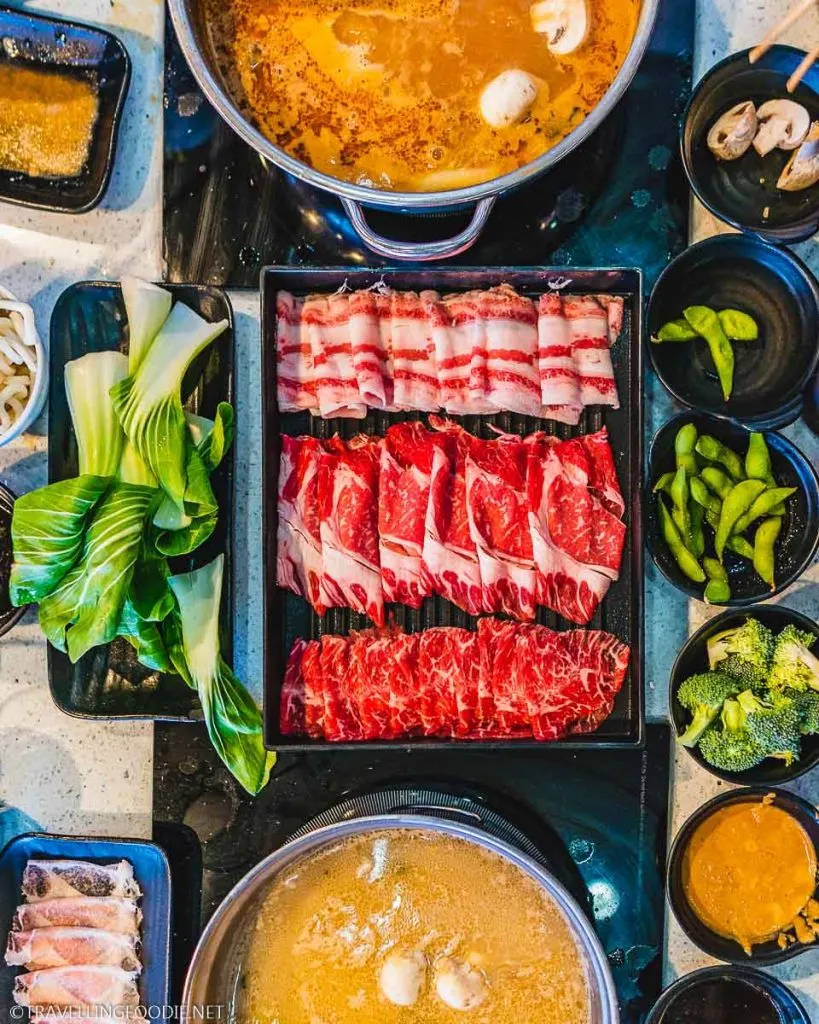
For lazy eaters like me, it’s also common to do it Chinese hot pot style where you just dump everything in the pot.
Shabu-shabu is a popular Japanese food that is enjoyed by many, and is especially popular during the colder months.
In California, all-you-can-eat Japanese shabu-shabu restaurants has become so popular so, every time I visit, I make sure to eat at one.
Soba
Soba is also a noodle dish made of buckwheat flour.
This traditional Japanese food is like the Japanese version of spaghetti and can be enjoyed in either hot or cold dishes.
Though it’s usually overshadowed by Ramen and Udon, Soba dishes can be easily be found all over Japan.
Much like other Japanese dishes, Soba has regional variations as well, but the most common one is enjoying it as cold noodles with Tsuyu sauce.
While soba is enjoyed all year long, there are specific soba dishes that are only available on special occasions.
An example is the Toshikoshi Soba, which is typically served on New Year’s Eve as a symbol of longevity.
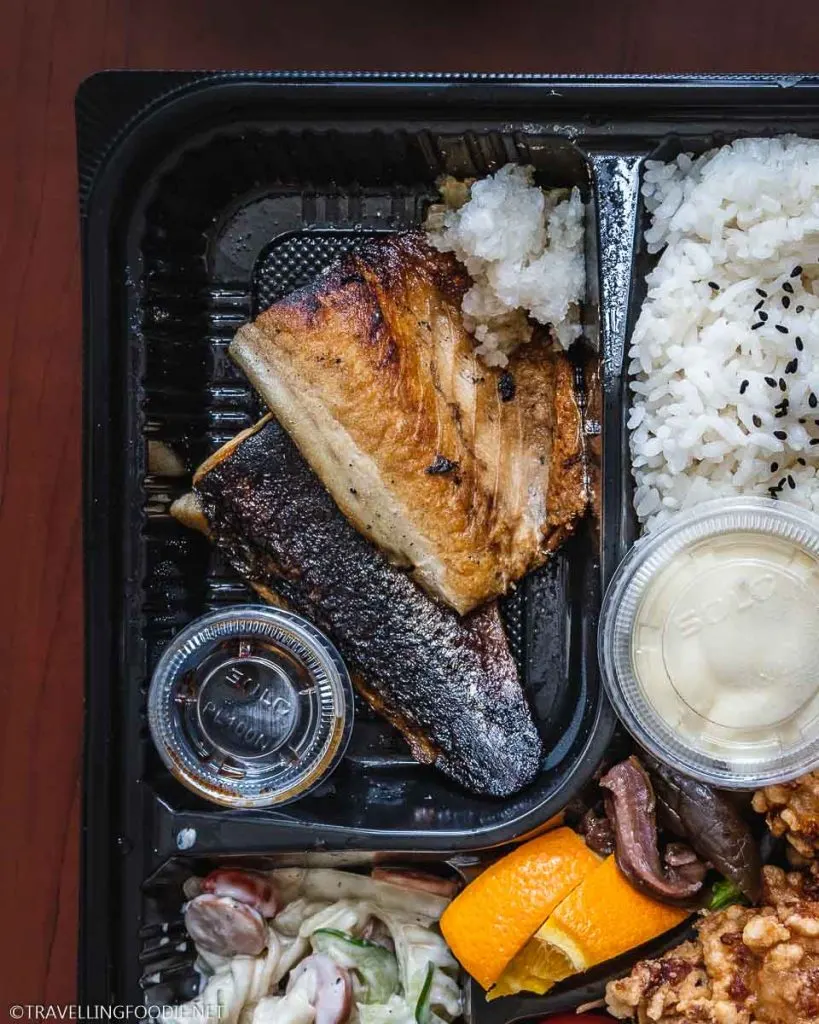
Somen
Somen is a type of thin noodle made from wheat flour that is commonly served cold during the summer months.
These traditional Japanese noodles are often served with a dipping sauce or soup and garnished with scallions, grated ginger, and shredded nori.
The lightness and simplicity of somen make it a perfect dish for hot summer days.
Sukiyaki
Sukiyaki is a classic Japanese food that’s perfect for colder months.
It’s a hot pot dish that typically features thinly sliced beef and vegetables, cooked in a sweet and savory soy sauce-based broth.
The meat and vegetables are often dipped in raw egg before eating, adding a creamy richness to the dish.
It’s a fun and interactive meal that’s best shared with friends or family.
Sukiyaki and Shabu-Shabu are very similar.
In fact a lot of shabu-shabu restaurants in North America offer Sukiyaki broth as well.
A major difference is in the dipping sauce offered as shabu-shabu typically uses ponzu or sesame sauce while sukiyaki only has the raw egg.
They also differ in pots with sukiyaki using a flat iron pot and shabu-shabu using a deep pot that heats up quickly.
Sushi
If there’s a dish that most people associate Japanese food with, it’s sushi!
In its simplest form, Sushi is basically vinegar rice with toppings, usually raw fish.
Sushi is perhaps the most popular Japanese food not only in Japan but the rest of the world.
It’s interesting to note that, like Nova Scotia lobster, sushi was considered poor man’s food, usually for the fishermen, and the use of vinegar and rice was meant to preserve the fish.
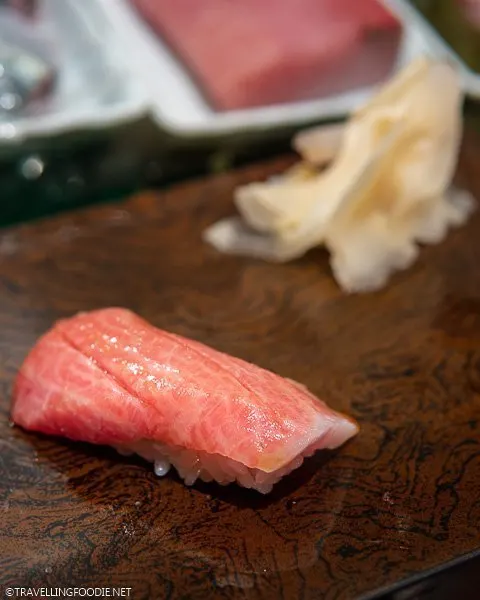
Though sushi can still be cheap, it can also be very luxurious and one of the most expensive culinary experiences with some sushi omakase experiences costing over $500 per person!
This traditional Japanese food comes in many forms, and here are some of the popular ones:
- Chirashizushi (ちらし寿司) – Chirashi, also known as scattered sushi, is a bed of sushi rice and with sashimi “scattered” over the top in a decorative manner.
- Inarizushi (いなり寿司) – Inari is sushi rice stuffed in fried tofu pouches.
- Oshizushi – Oshizushi, also known as pressed sushi, is basically like your classic sushi that’s pressed in a box mold so the sushi has a rectangular box shape.
- Temaki – Temaki is hand roll sushi where the fish, sushi rice and toppings are served in a single serve seaweed that’s rolled into a cone.
- Norimaki (海苔巻) – Norimake is sushi maki rolls, which is sushi fillings rolled into roasted seaweed and then sliced into bite-sized pieces.
- Nigiri – Nigiri sushi is the most classic form of sushi where rice is formed by hand into an oval shape then topped with sashimi and other garnishes.
- Gunkan – Small boat type sushi where a small ball of sushi rice is wrapped in seaweed then topped with fish and toppings.
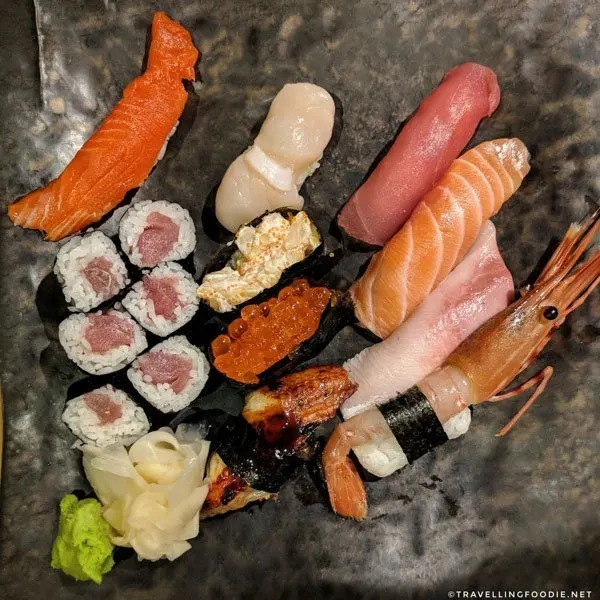
Takoyaki
Takoyaki literally translates to “grilled octopus.”
This traditional Japanese food is a savory snack or street food that originated in Osaka.
Tokyaki are grilled balls made from wheat batter filled with octopus bits (or other fillings), and usually topped with katsuobushi (shaved bonito flakes), seaweed flakes, mayonnaise, and takoyaki sauce dressing.
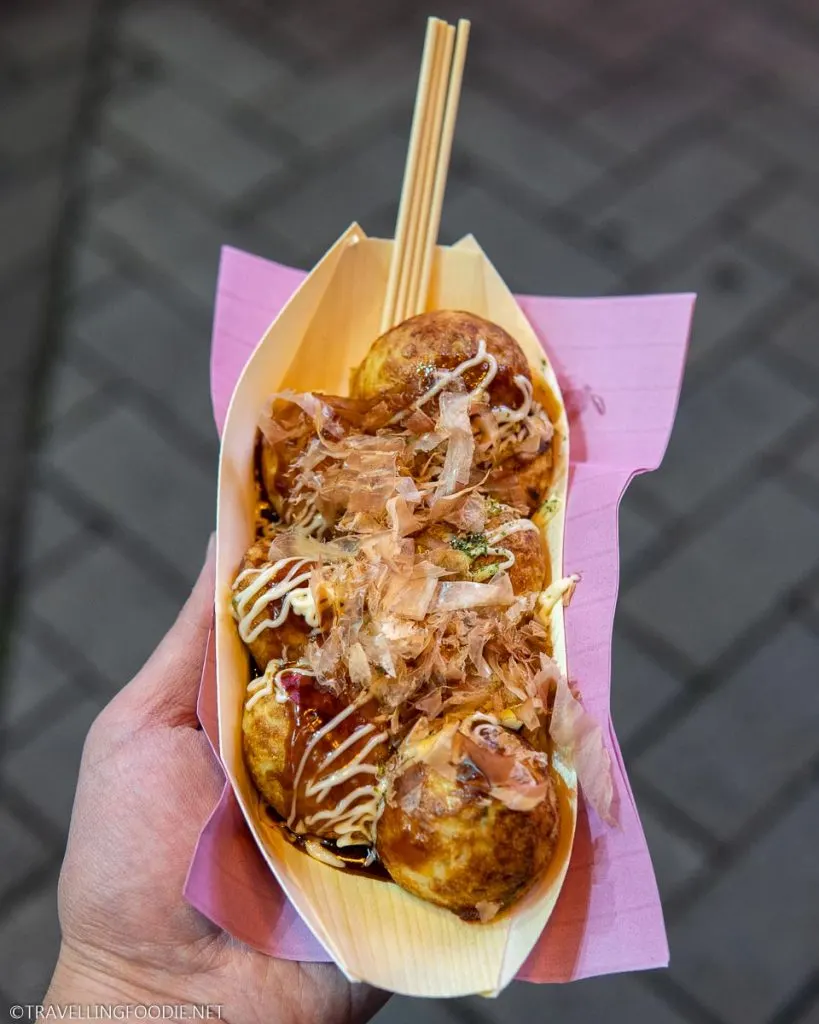
Tempura
Tempura is the most popular Japanese deep-fried food.
Portuguese travelers introduced the fritter-cooking technique to Japan in the 16th century, which paved way to the creation of tempura.
This traditional Japanese dish consists of lightly battered pieces of seafood or vegetables that’s deep-fried.
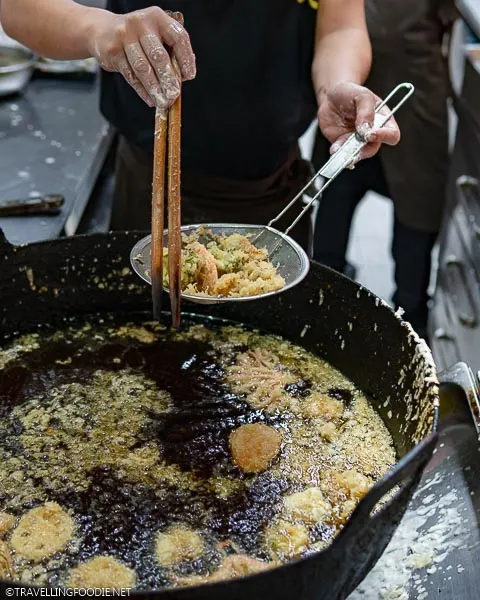
Tempura can be easily found all over Japan, and there are specific restaurants and food vendors that specialize and only serve tempura.
Though you can enjoy tempura on its own like a snack, it is also enjoyed as a main dish served with rice, udon, ramen or soba noodles.
I had the best tempura in Tokyo at Kushi-Tempura Dandan-ya, and I also loved the award-winning tempura from Tendon Akimitsu in Manila, which hails from Tokyo.
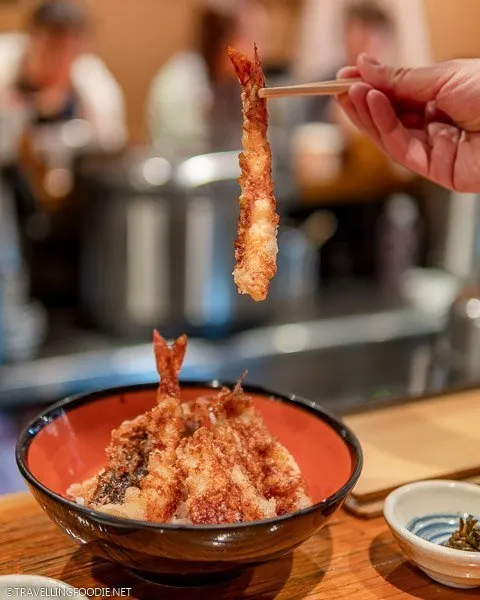
Tonkatsu
One of the most popular Japanese dishes for meat lovers, tonkatsu is a deep-fried pork cutlet.
This traditional Japanese food is made by coating a pork cutlet in panko breadcrumbs and then frying it until crispy and golden brown.
Tonkatsu is often served with shredded cabbage and a sweet and savory tonkatsu sauce made with Worcestershire sauce, ketchup, and other seasonings.
I love how you get a nice contrast of crispy and moist textures and sweet and savoury flavours.
It is a popular dish in Japanese restaurants and is also commonly found in bento boxes.
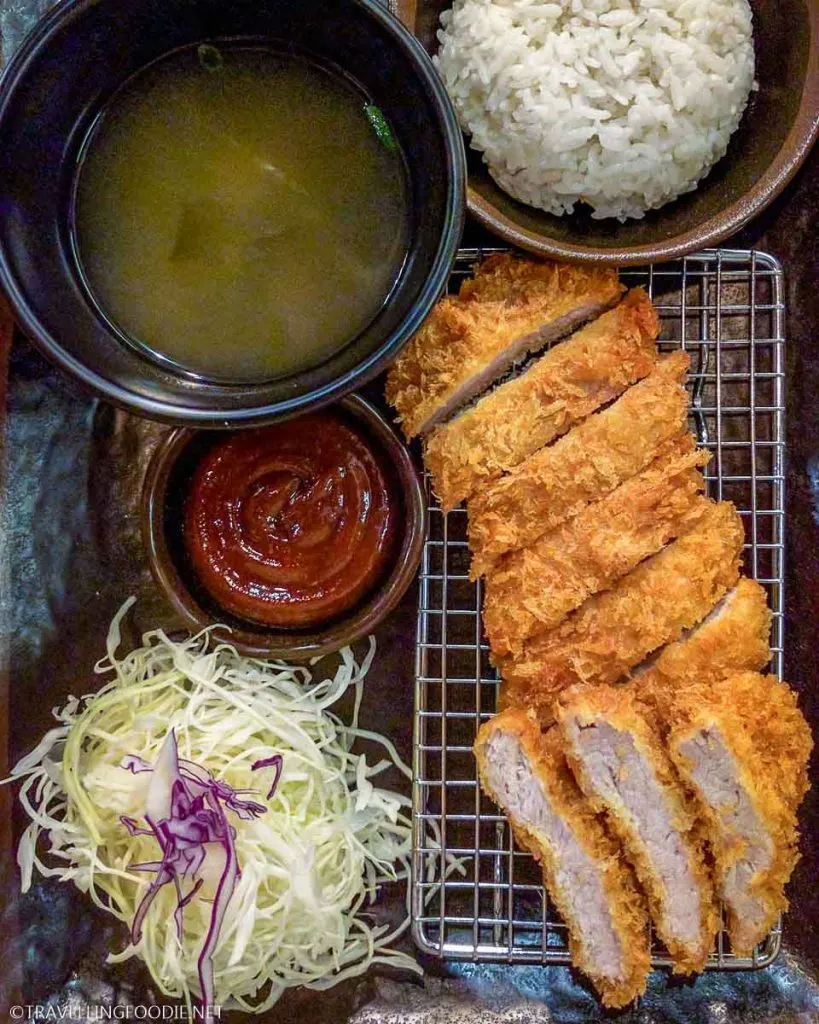
Udon
The next popular noodle dish after ramen, Udon is thick noodle made from wheat flour.
This traditional Japanese food is typically served as a hot soup in a delicate dashi broth with sliced scallions, but can also be enjoyed on its own as hot or cold noodles.
The basic udon noodle soup is one of the most popular vegetarian dishes in Japan and is considered much healthier than ramen.
You can also enjoy udon with toppings like prawn tempura and fried tofu.
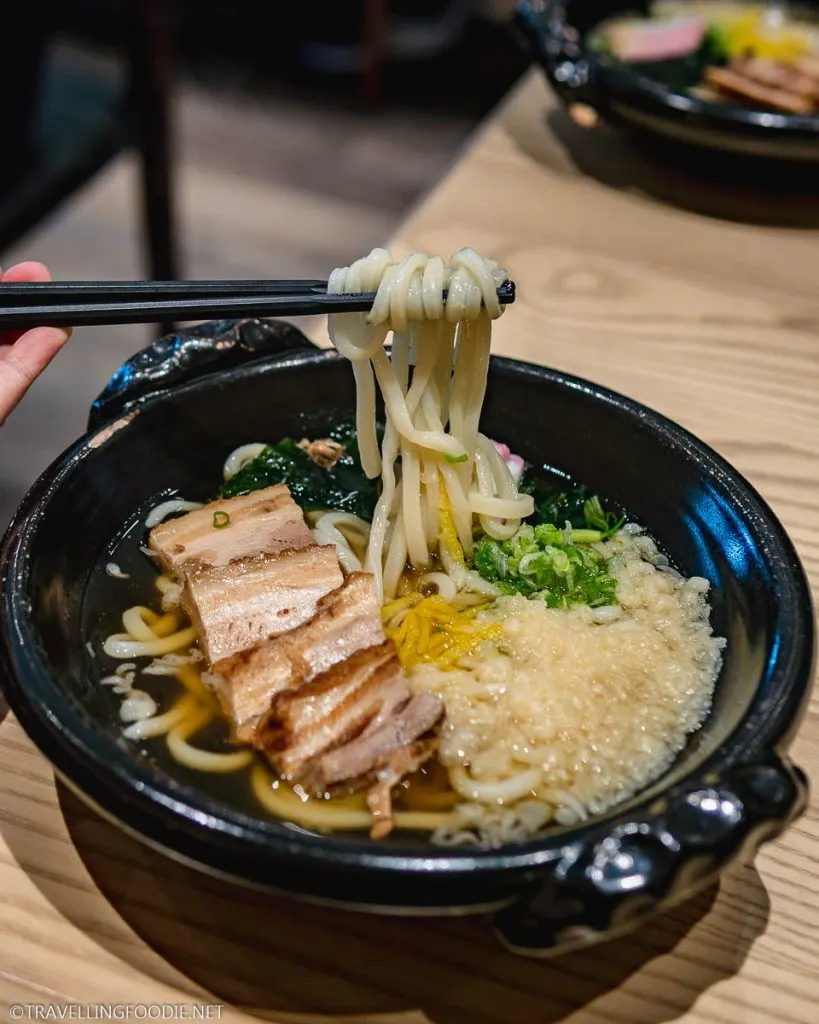
Unagi
Unagi, or freshwater eel, is a beloved Japanese food that has been enjoyed for centuries.
This traditional Japanese food is typically prepared by grilling eel over charcoal and basting it with a sweet and savory sauce made of soy sauce, sake, and mirin.
Unagi is known for its rich and flavorful taste and has become a staple in many Japanese cuisine menus.
Eel is believed to have many health benefits, including stamina and vitality.
Unagi is typically enjoyed as part of a sushi, handroll, a don (rice bowl) or on its own.
The first time I had unagi tempura was at Sushi Kashiba, one of the best restaurants in Seattle.
It was so good!
I highly recommend trying unagi tempura when you see it on menu.
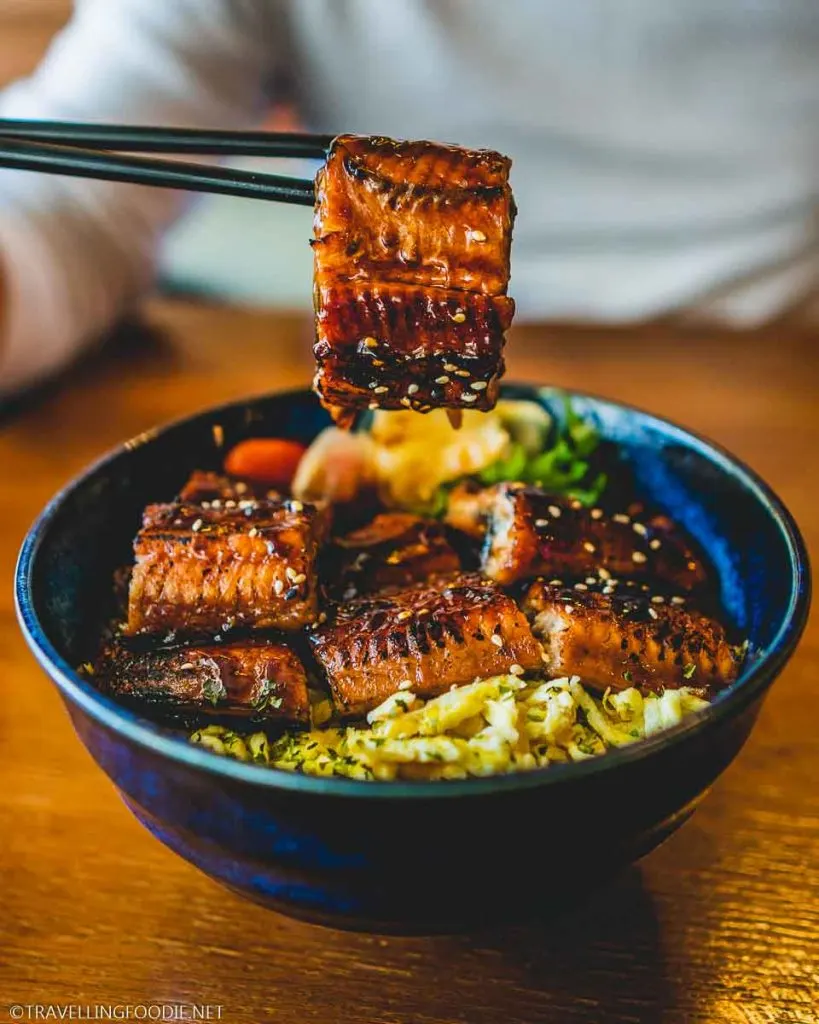
Wagyu
When you go to a steakhouse or restaurants serving beef or steak, the most expensive one you’ll find on the menu is usually Japanese wagyu.
Wagyu is beef from special type of Japanese beef cattle that have been raised with specific diet and standards.
Different prefectures in Japan have their own type of wagyu like Kobe, Matsusaka, Miyazaki, Ohmi, Joshu, Sendai, Akaushi, Hida, Kumamoto, Kagoshima, Kuroge and more.
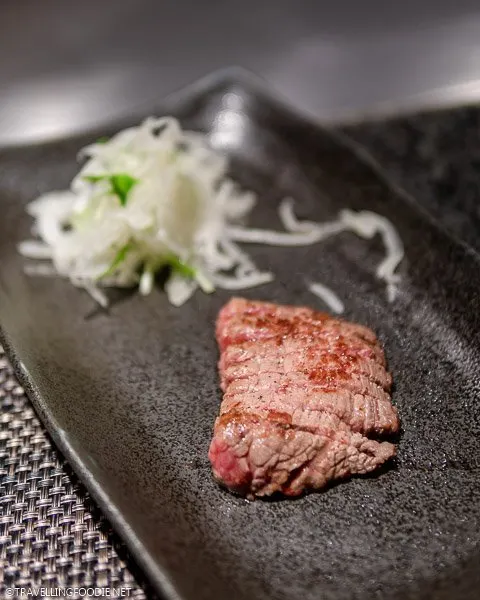
And wagyu beef has a specific grading on quality as well: a letter A to C (A being the best) and a number from 1 to 5 (5 being the best).
So you want to look for A5 Wagyu!
This traditional Japanese food is famous for its distinct tenderness and marbling, making it melt-in-your-mouth.
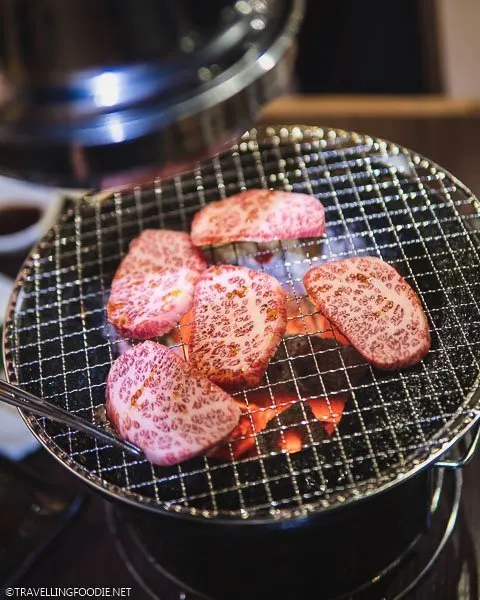
Yakiniku
Yakiniku literally means “grilled meat” and basically refers to Japanese barbecue.
Similar to the Korean BBQ, this traditional Japanese food is usually enjoyed at Yakiniku restaurants where you’re served raw slices of meat, seafood and vegetables.
Then you have a charcoal grill at the table to cook the meats yourself.
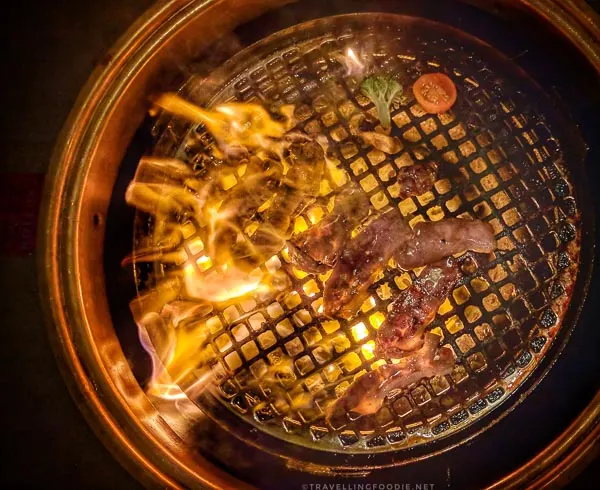
Much of Japanese food revolves around simplicity and bringing out the best of the ingredient.
Unlike Korean BBQ, yakiniku meats usually don’t come pre-seasoned or pre-marinated so you can taste the full flavour of the meat once grilled.
They do typically provide seasoning and dipping sauces (called tare) on the side should you wish to add more flavour on top.
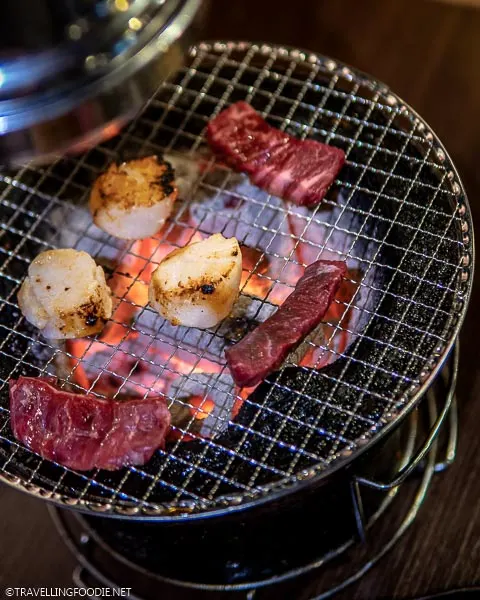
Yakisoba
Yakisoba is a Japanese food that consists of stir-fried noodles, meat, and vegetables.
The classic Japanese dish is often seasoned with a sauce made from soy sauce, Worcestershire sauce, and other seasonings.
Yakisoba is a popular street food in Japan, and is often found at festivals and other outdoor events.
When I was in the popular Kuromon Ichiba Market in Osaka, I saw many vendors making them fresh from scratch.
The smell was so good and definitely entices you!
I also noticed okonomiyaki restaurants like Okonomiyaki Kiji tend to also serve yakisoba in the menu because it uses the same grill and Hiroshima-style okonomiyaki has yakisoba in it.
Yakisoba is also a popular dish to make at home, and is a quick and easy meal that is both filling and delicious.

Yakitori
Yakitori is bite-sized chicken pieces on a skewer grilled over open charcoal flame and one of the most popular Japanese barbecue dishes.
This traditional Japanese food is a staple in izakayas where you have it with some cold beer or you can also find it as street food.
Different parts of the chicken are used for yakitori: mune (chicken breast), tsukune (chicken meatball), bonjiri (chicken tail), kawa (chicken skin) and others.
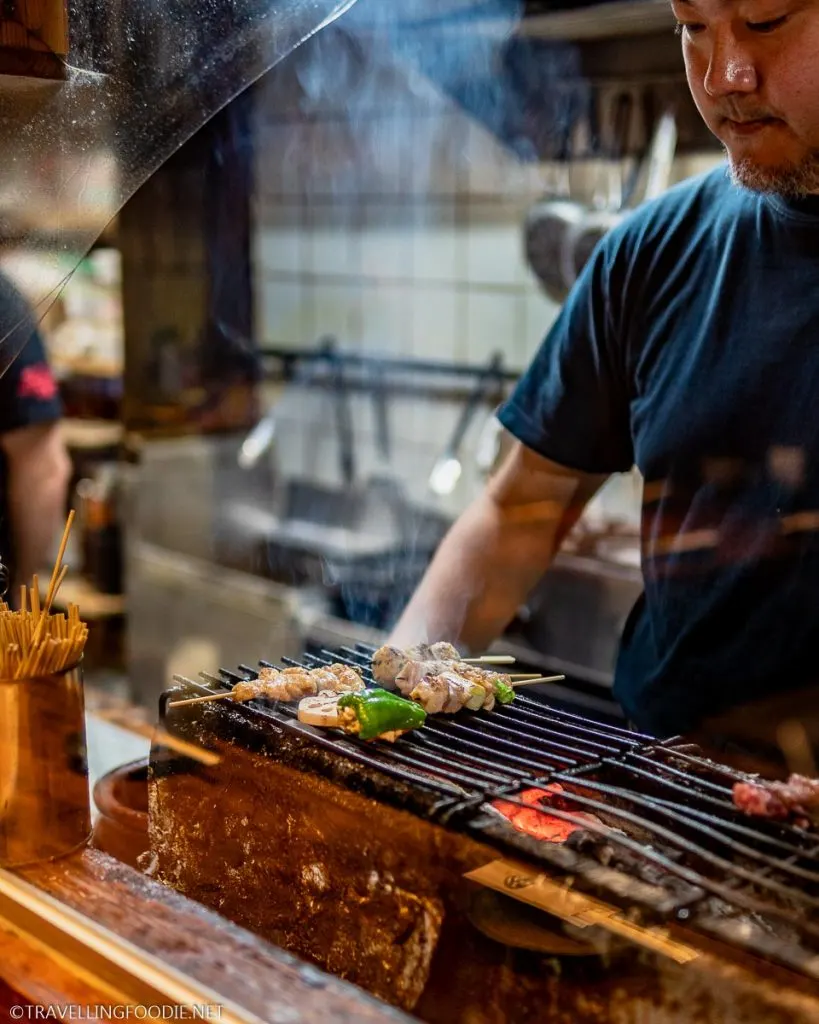
Zosui
Zosui, also known as Japanese rice soup, is a comforting and warming dish that is perfect for cold winter days.
The soup is made by simmering rice in broth with various ingredients such as vegetables, meat, and eggs.
Think of Zosui as the Japanese version of congee though it is not exactly the same.
This traditional Japanese comfort food is often served with a side of pickled vegetables and is commonly enjoyed as a late-night snack or as a hangover cure.
VIDEO: Most Popular and Traditional Japanese Food Video
Here’s a great video highlighting the Top 50 Most Popular Japanese Foods.
Traditional Japanese cuisine features some of the best foods in the world from raw fish like sushi to the best beef, wagyu!
One thing I love about Japanese food is, despite the onset of westernization and popularity of fusion dishes, Japan still manages to preserve its local cuisine and culinary techniques and traditions.
Enjoy the content and want to support? Buy me a coffee ☕
Got a comment on this article? Join the conversation on Facebook, Instagram, TikTok, or Twitter and share your thoughts!